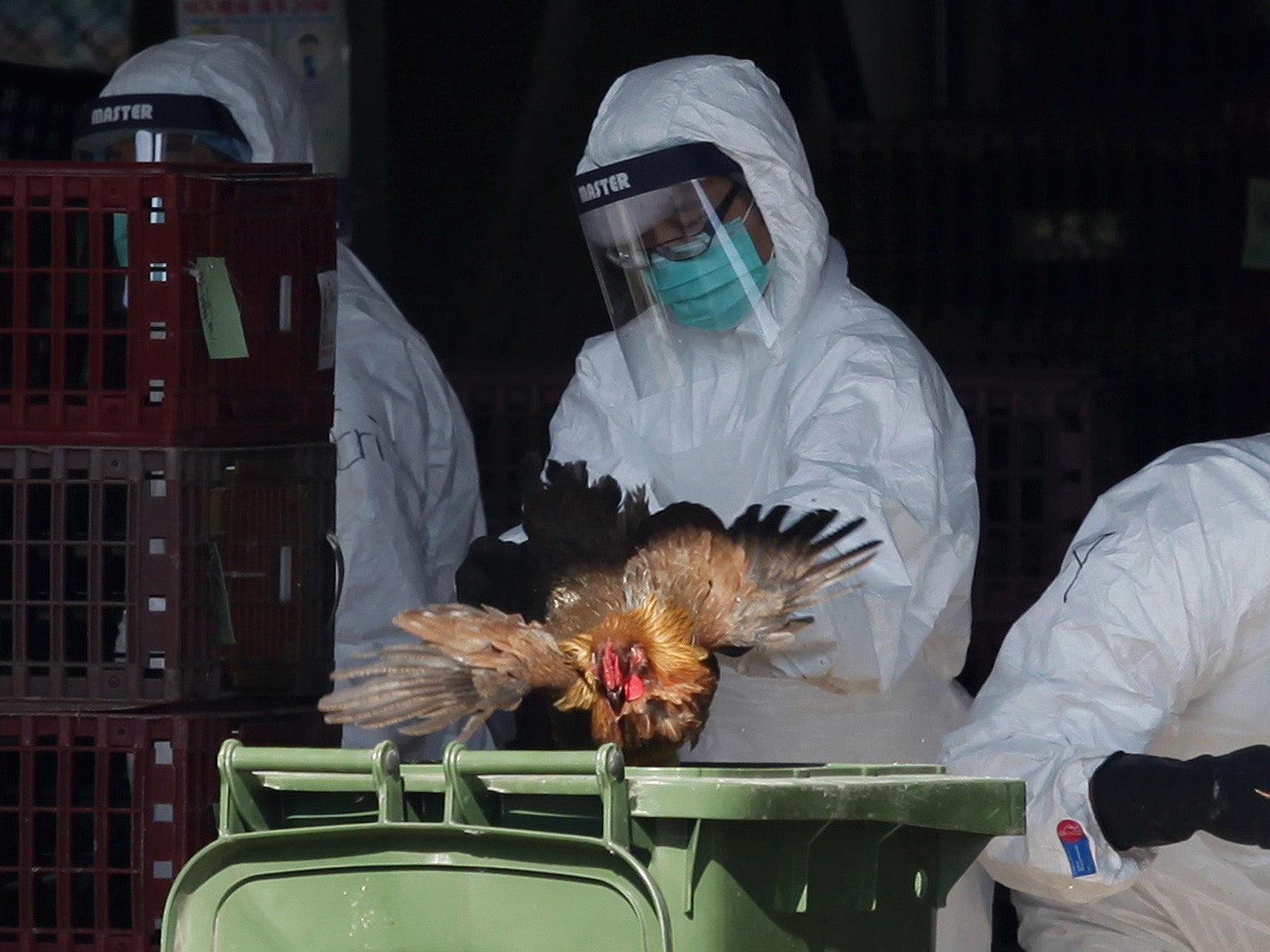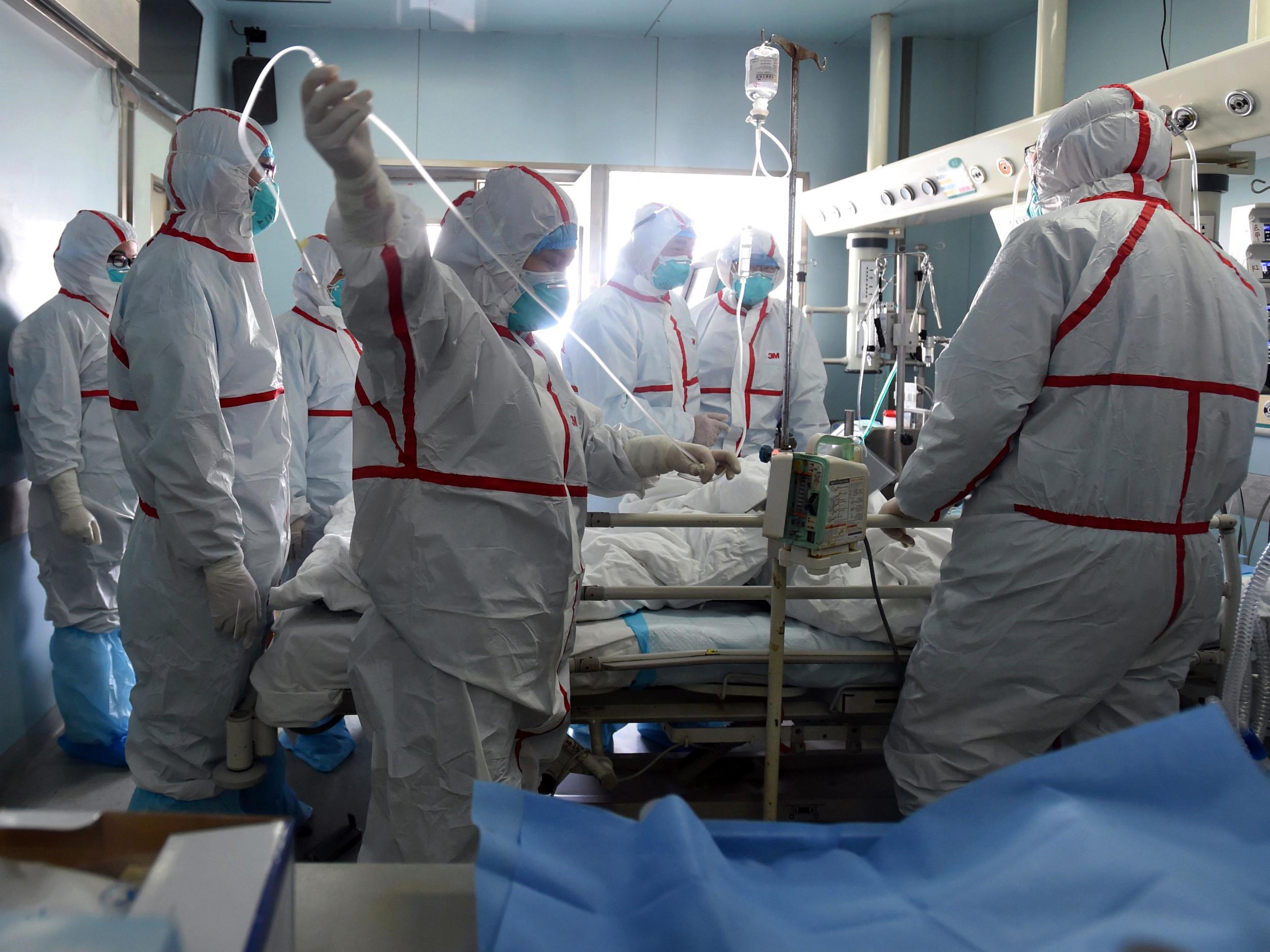Scientists create 'mutant bird flu' to prepare for possibility of deadly global pandemic
'We need to know what the virus could do in nature, so we can be alert and aware if we start seeing these changes,' says professor

Deadly strains of bird flu have so far largely been caught by people who work closely with poultry – but scientists fear the virus could mutate and cause the world’s next devastating pandemic if it begins to spread from human to human.
In a bid to stay one step ahead of the disease and prepare for a potentially disastrous outbreak before it happens, researchers have created their own mutations in a lab that could allow the virus to infiltrate human lungs.
Professor James Paulson of The Scripps Research Institute in California and his team conducted their experiments on a key protein that peppers the surface of the virus and binds to the cells it infects.
The scientists did not alter the virus itself due to the extreme danger posed by such infectious agents, which if unleashed could potentially cause a man-made global pandemic.
"We need to know what the virus could do in nature, so we can be alert and aware if we start seeing these changes," Professor Paulson told The Independent.
"The virus is infecting humans, but it hasn't yet transmitted from human to human."
The study, published in the journal Public Library of Science Pathogens, described how subtle alterations to the protein's genetic programming produced strains that switched their target from bird to human cells.
The mutant proteins latched onto cells taken from human trachea tissue – suggesting they could infiltrate human airways.

“H7N9 avian influenza virus is widespread in chickens in China and infects human exposed to live poultry but does not yet transmit from person to person,” said Professor Wendy Barclay, Chair in Influenza virology at Imperial College London, who was not involved in the research.
”So the question now is, could the virus recapitulate this switch in nature?“
Professor Barclay said the study could help create a vaccine to prevent a deadly outbreak on the scale of historical pandemics such as the Black Death, which killed more than 75 million people in the 14th century.
”Predicting which influenza virus will cause the next human pandemic is both of scientific and public health interest. We can't afford to make vaccines against all of them, so knowing which ones to worry about would allow efforts and funds to be focused,” she said.
The H7N9 strain was unknown in humans until the first cases of people catching the virus from poultry were reported in China in March 2013.
So far there have been 1,552 confirmed cases of human infection including 596 deaths, according to latest figures from the United Nations' Food and Agriculture Organisation.

Most people infected develop severe and potentially fatal pneumonia. Some H7N9 sub-strains have already become resistant to antiviral drugs.
The researchers altered three key amino acids, or protein building blocks, that form part of the structure of the infectious protein haemagglutinin.
Avian flu viruses coated with the changed haemagglutinin may be able to infect human cells in the same way as human inflenza – but while possible, this is thankfully very unlikely, said Professor Paulson.
"These mutations that we’ve identified haven’t occurred. Maybe it’s because there are three of them," he said.
"It’s very easy for a virus to make a single mutation, and two is much more difficult. To make three is even more difficult. We take some comfort in the fact it took three mutations to really make the transformation."
He added: "With these kind of changes, it might become more like a regular human influenza virus, that replicates in the upper respiratory tract, and not be so lethal."
Dr Fiona Culley, a senior lecturer at Imperial College London and spokesperson for the British Society for Immunology, said the exact combination of mutations needed for bird flu to be able to attach to human lung cells was possible but “relatively low”.
“Flu viruses are known to be able to mutate their outer surface fairly readily. This is a strategy used by circulating viruses which already infect humans to slowly change their appearance to avoid existing immunity within a population (in a process known as genetic drift),” she said.
“The authors found that certain combinations of three mutations were needed for the bird flu to be able to attach to human lung cells. Some of the individual mutations have been seen naturally, but these combinations of mutations have not,” said Dr Culley.
“They could potentially happen, but there is currently no evidence that they have ever occurred and the chances of all three occurring together is relatively low.”
A more positive result from the study was confirmation that such mutations made the protein less stable. Previous work on a different type of bird flu, H5N1, has shown that viruses with unstable surface proteins find it difficult to switch successfully from one host to another.
For H7N9 to become a serious threat to human populations it would need other changes besides those affecting the three amino acids, Professor Barclay said.
Join our commenting forum
Join thought-provoking conversations, follow other Independent readers and see their replies
Comments
Bookmark popover
Removed from bookmarks